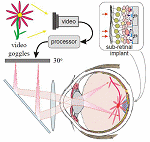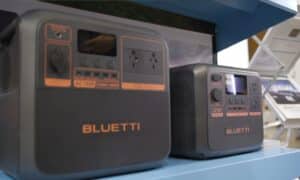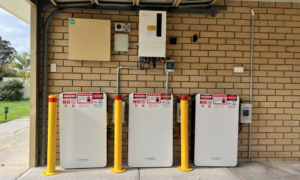Researchers at Stanford University have developed a retinal implant that will make artificial vision more natural – thanks in part to the use of solar cells.
While retinal implants are already in use, most contain arrays of electrodes placed at the back of the eye that only partially restore vision to people with diseases that cause retinal degeneration. Most people with these implants can only distinguish between light and dark areas. The Stanford implant would allow patients to make out the shape of objects.
The Stanford implant is the first using flexible cells, meaning hat relatively large implants can be placed under the retina without being deformed. It has approximately 1,000 electrodes, compared to 60 electrodes commonly found in other systems.
The Stanford-developed device consists of a set of goggles and an implant in the eye. A video camera mounted on the goggles transmits images to a processor that then generates images on an LCD screen on the inside of the goggles. The LCD display transmits infrared light pulses that project the image to solar cells implanted underneath the retina. The photovoltaic cells then convert light signals into electrical impulses that in turn are translated by the brain into images.
Now is the right time to switch to sydney solar energy. We recommend seeking at least 3 solar quotes to ensure that you are getting the best deal and selecting the right solar installer in sydney whom you can trust. With this, you can guarantee a solar system in sydney that meets your energy needs.












































